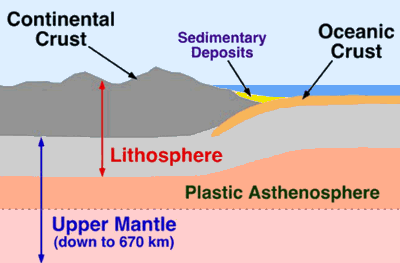| Four issues about continental drift to
encourage you to wander away from the established path and think some new thoughts. Page 1 Click here for Page 2 |  |
|
|
Page that references this one |
|
| Four issues about continental drift to
encourage you to wander away from the established path and think some new thoughts. Page 1 Click here for Page 2 |  |
1) What
would
the Earth look like with the continents uncrumpled?
Many people have noticed that the continents seem to fit together, but when people try to imagine what the Earth looked like before the continents began to move, they move the locations of the continents. 2) Does the ocean floor slide under the continents? Or diffuse? 
The drawing to the right is one of the "official" drawings of how the ocean floor is forced under the continents, like a knife blade cutting into an apple. |

3) Have any coal fields converted to diamond?
The incredible depth that some sedimentary deposits have been pushed brings up some interesting questions, such as:• Have any fields of coal been pushed so deep that the entire field has converted to diamond? |
4) Can we make a high-quality pumice?When I was younger, I would fantasize about a melting chamber that could hold silica and water under pressure, which would lower its melting point, and then heat it up to the point at which the water dissolves into the molten silica, and then release it so that it expands into foamed silica. |